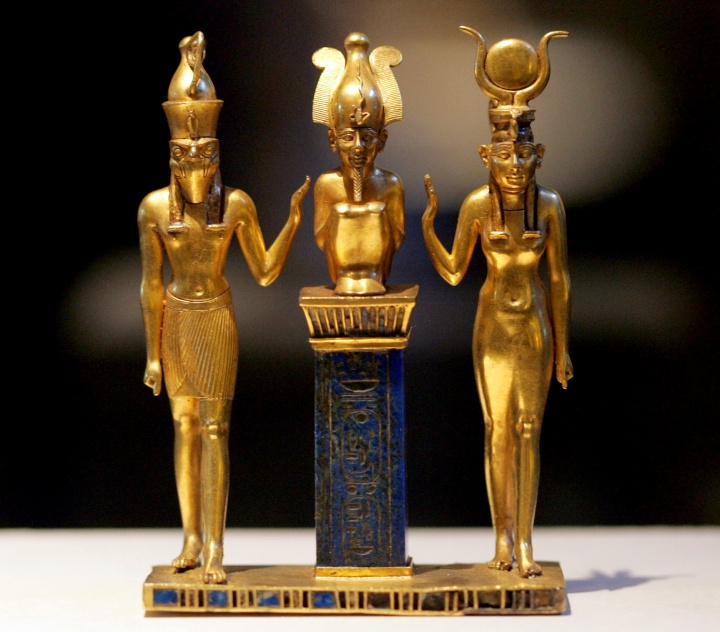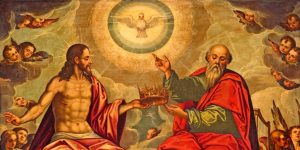
Triune nature of Godhood has been a reoccurring motif through antiquity in very many spiritualties. Though today, the very mention of a triune God implies the Christian deity. The very adoption of the trinity doctrine by early Christians is another shouty testament to the heavy influence other spiritualties across the world influenced the doctrines of Christianity at infancy.
In Sumerian mythology, there we three chief Gods ruling over the universe; Anu, Enlil, and Ea.
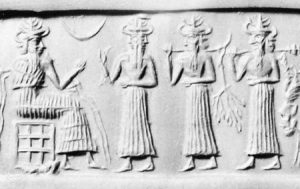
In Greek mythology, it was the three sons of Kronos that formed the triune chief Godhood; Zeus, Poseidon, and Hades. In the words of Aristotle ‘All things are three, and thrice is all: and let us use this number in the worship of the gods; for, as the Pythagoreans say, everything and all things are bounded by threes, for the end, the middle and the beginning have this number in everything, and these compose the number of the Trinity’ ”
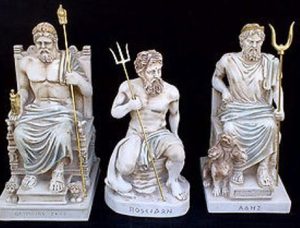
Ancient Babylonia had a rather vivid conception of three persons in one God in their depiction of a deity with three heads of distinct personalities contained within a single form. They also used symbols such as the triangle to represent the unity of the triune Godhood, a practice which today, still exists within the Christian symbolism.
In Hindu mythology, Brahma, Vishnu, and Shiva composed of a fluid triune Godhood. In the Hindu scriptures Puranas, their relationship was represented in these words “The single being appears under three forms by the acts of creation, preservation, and destruction, but he is one.”
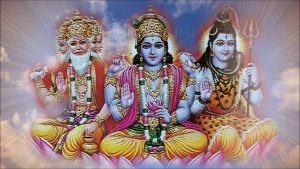
The Phoenicians worshipped Ulomus, Ulosuros, and Eliun. Rome worshipped Jupiter, Neptune, and Pluto. In Germanic nations, they were called Wodan, Thor, and Fricco.
In Egyptian mythology, there was the triune Godhood of Amun, Re, and Ptah and the holy family of Osiris, Isis, and Horus.
“The Hymn to Amun decreed that ‘No god came into being before him (Amun)’ and that ‘All gods are three: Amun, Re and Ptah, and there is no second to them. Hidden is his name as Amon, he is Re in face, and his body is Ptah.’ . . . This is a statement of trinity, the three chief gods of Egypt subsumed into one of them, Amon. Clearly, the concept of organic unity within plurality got an extraordinary boost with this formulation. Theologically, in a crude form it came strikingly close to the later Christian form of plural Trinitarian monotheism”
And several other representations of the trinity through antiquity, but the primary Trinitarian Godhood that inspired the Christian conception is the Triune relationship of the Holy family of Osiris, Isis, and Horus. The relationship of the Holy Egyptian Godly family inspired the conception of the heavenly relationship as a literal nuclear triune family with a Father, a Son, and a creative force that originally bore a feminine representation.
In early Gnostic Christian doctrine, today deemed heresy and lost through antiquity as most of these Gnostic gospels were vehemently opposed by the Church, the trinity was a given a more fitting description of a nuclear Godhood.
The Father, the son, and the mother.
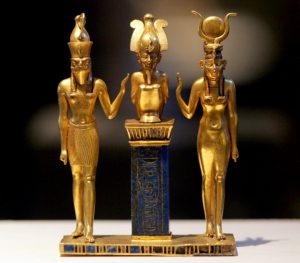 Probably, in the Church’s attempt to create a distinctive triune doctrine of nuclear Godhood, they favored the presentation of a family that includes a father, a son, and omits a mother.
Probably, in the Church’s attempt to create a distinctive triune doctrine of nuclear Godhood, they favored the presentation of a family that includes a father, a son, and omits a mother.
Egyptologist Arthur Weigall, while himself a Trinitarian, summed up the influence of ancient beliefs on the adoption of the Trinity doctrine by the Catholic Church in the following excerpt from his previously cited book:
“It must not be forgotten that Jesus Christ never mentioned such a phenomenon [the Trinity], and nowhere in the New Testament does the word ‘Trinity’ appear. The idea was only adopted by the Church three hundred years after the death of our Lord; and the origin of the conception is entirely pagan.
“The ancient Egyptians, whose influence on early religious thought was profound, usually arranged their gods or goddesses in trinities: there was the trinity of Osiris, Isis, and Horus, the trinity of Amen, Mut, and Khonsu, the trinity of Khnum, Satis, and Anukis, and so forth …
“The idea of the Spirit is co-equal with God was not generally recognized until the second half of the Fourth Century A.D. … In the year 381 the Council of Constantinople added to the earlier Nicene Creed a description of the Holy Spirit as ‘the Lord, and giver of life, who proceedeth from the Father, who with the Father and Son together is worshipped and glorified.’ …
“Thus, the Athanasian Creed, which is a later composition but reflects the general conceptions of Athanasius [the 4th-century Trinitarian whose view eventually became official doctrine] and his school, formulated the conception of a co-equal Trinity wherein the Holy Spirit was the third ‘Person’; and so it was made a dogma of the faith, and belief in the Three in One and One in Three became a paramount doctrine of Christianity, though not without terrible riots and bloodshed . . .
“Today a Christian thinker . . . has no wish to be precise about it, more especially since the definition is obviously pagan in origin and was not adopted by the Church until nearly three hundred years after Christ.”
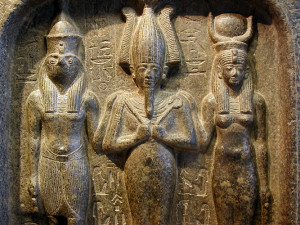 It is not without a sense of remarkable irony, that, Christianity, propagated on the demonization of African spirituality, has its dogma wrapped and formulated using African spirituality as its blueprint. Whilst, our spirituality is looked on with disdain and contempt, they were subtly sold back to us in the eloquence of a new theological jargon enforced by fierce mobs of Godly warriors bearing the cross on their chest and “Deus vaut” as a battle cry.
It is not without a sense of remarkable irony, that, Christianity, propagated on the demonization of African spirituality, has its dogma wrapped and formulated using African spirituality as its blueprint. Whilst, our spirituality is looked on with disdain and contempt, they were subtly sold back to us in the eloquence of a new theological jargon enforced by fierce mobs of Godly warriors bearing the cross on their chest and “Deus vaut” as a battle cry.

